How To Store Your Batteries
We struggle to keep a supply of batteries ready to go to work when needed. When Mark and I visit stores like Home Depot and Costco, we see racks with battery packages, which shows that you can often save money if you buy in bulk.
Our challenge is knowing how to store batteries to take advantage of the bulk sales while keeping them as fresh as possible. Harry gifted me some batteries a few years ago because I couldn’t get C and D batteries. They were shipped from Sam’s Club. I only buy Sam’s Club batteries now.
If we try to simplify battery storage, others will probably face the same dilemma. I decided to research and learn as much as possible to share the information in this post.
I could expand my research and try to cover things like car, boat, and camper batteries, but I decided to focus on the small batteries we use in our flashlights, smoke detectors, clocks, calculators, and more.
Let’s get started in our efforts to learn how to store batteries. The information order isn’t as important as the content, so I hope you can easily follow along.
In case you missed this post: 100 Items That Will Disappear After An Emergency
How To Store Your Batteries
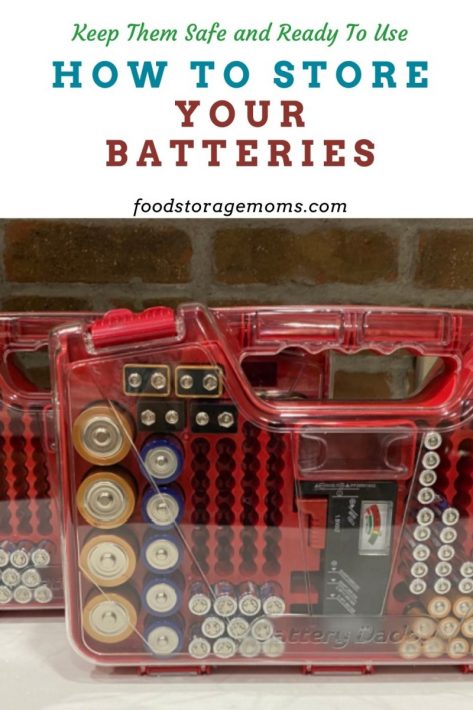
Try to Keep the Batteries You Buy in the Original Sealed Package
Batteries typically come in those “hard to open” packages that usually require scissors. They’re sealed that way so moisture (humidity) can’t access the batteries and cause potential hazards until it’s time to use them. Once opened, they MAY begin to lose some charge, but generally, that’s a relatively slow process unless the humidity level is high.
Another reason to keep them in their original packaging is to maintain the integrity of new batteries compared to old batteries you may have around. What you don’t want to do is mix older ones with those you’ve just opened. The package also helps to keep them dry and away from condensation.
As a backup plan, when you don’t save the original package, please place them in a plastic container. If you have good-quality containers, they should be somewhat airtight. Plastic is preferred to metal objects and containers since the metal can interact with the batteries and cause a discharge or short-circuit.
When you put them in the plastic container, place them side by side with the positive conductor battery terminals toward the edge of the container. You may want to put tape on the ends of the next row or consider separating the rows with a small piece of cardboard so the ends don’t touch.
I opted to buy this Battery Storage Unit
Topaz mentioned she likes this wall-hanging Battery Storage Unit
Batteries Should be Stored by Type, Manufacturer, and Age
As we all know, household batteries come in many shapes and sizes with designations of AAA, AA, A, C, D, etc. Of course, AAA batteries are smaller and are used in devices with a minimal power requirement, and so on.
The best choice is to store batteries by their type/size. It is also suggested that you don’t mix and match manufacturers since they may tend to interact with each other for some reason.
I read that if you have limited storage container space, be sure to separate the batteries in the container by carefully placing the type and manufacturer in a plastic bag or using the cardboard separators mentioned earlier.
As mentioned above, don’t mix your used or older batteries with new ones. There is nothing more frustrating than taking the time to change out a worn-out battery with the one you think is new and fully charged, only to have it fail in a short time frame and have to change it again.
Most batteries now come with an expiration date or use by date. Those are guidelines from the manufacturer, so they should be pretty accurate. The longevity of the batteries may be different between brands, so check that out before you purchase. Perform a regular inspection schedule of your extra batteries so you can stay on top of any signs of damage and their expiration dates.
That is particularly true when changing smoke alarm batteries, which require you to get a ladder out of the garage to accomplish the task.
Try to Keep the Storage Temperature at “Room Temperature” or Lower
There is an old wives’ tale or myth that storing batteries in the refrigerator or freezer will either bring them back to life or significantly extend their life. That really isn’t the case. For long-term storage, it is best to keep the batteries in a place that you find comfortable.
Avoid having your storage area for batteries anywhere that experiences extreme temperatures. When your emergency batteries are stored at about 77°F/25°C (which I find to be a bit too warm for me), they will lose very little charge. A temperature of 34°F/1°C to 60°F/15°C MAY show a very minor benefit when it comes to storage life, but the risk from moisture/water damage is too high.
Some manufacturers suggest putting the batteries in the freezer, but that is certainly the exception. There is also the issue of allowing the battery to warm up before use or preventing it from working correctly.
Humidity Control is Critical
Having lived in the Western states most of my life, I haven’t had to deal with humid environments much. I remember Mark and me visiting Sanibel Island off the west coast of Florida with family one Thanksgiving.
We’d been to Florida on trips before and hadn’t been bothered much, other than a trip in late September to Disney World. Boy, that 90°F/32°C and 95% humidity was brutal! Anyway, after the Sanibel Island trip, we never could get the musty smell from our luggage.
Most batteries don’t like exposure to humidity. For some reason, Alkaline batteries seem to do better than others if the humidity is moderate, but most will last longer and perform better in drier environments. Also, it’s suggested that batteries be kept up off the ground.
Keep the Stored Batteries Away from Metal of All Kinds
Metal conducts electricity better than most materials, including water. Your batteries could begin losing their charge if stored anywhere they can come in contact with metal, including metal containers and any container with other metal items like coins or wire.
As mentioned, store the batteries in plastic containers, don’t let the positive and negative ends touch each other, and consider separating them with cardboard or masking tape.
What are Some Safety Considerations When Storing Batteries?
There are various safety issues when it comes to storing and using household batteries, as follows:
If the device using the batteries is going to be taken out of service for any long-term period, remove the battery. When not in use, batteries often begin to leak, which could cause significant damage to the device and create a possible fire hazard.
That also applies to batteries that have lost their charge and stopped working. Immediately remove them and dispose of them properly.
Don’t expose devices and their batteries to very warm or hot environments. This includes leaving your laptop in your car or on a window sill for extended periods.
The heat can damage the battery and related devices, which could prove very expensive to replace. Batteries have been known to explode if kept hot for very long, which is not a pleasant or safe situation.
Be sure to keep your children away from batteries. Not only are the batteries’ contents unsafe, but the small coin-shaped batteries could cause the little ones to choke if they are taken into the mouth.
You may be tempted to try to recharge regular batteries, but it won’t work and could prove dangerous. Also, if they are rechargeable, be sure to use the charging unit designed for that size and type of battery.
Most small batteries can be disposed of in your trash. Check local regulations and follow them.
If told to recycle, ask if there are size exemptions and where the batteries should be taken if recycling is required.
Final Word
Hey, we all use battery-powered devices every day. We may even use some but don’t realize a battery drives its use. Learning how to store batteries has helped me, and I hope you found the information helpful.
Let’s all work together to make the world more efficient and safe. May God bless this world. Linda

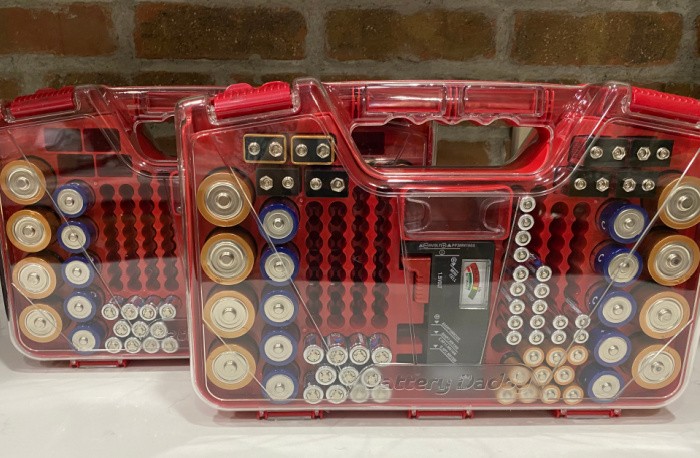

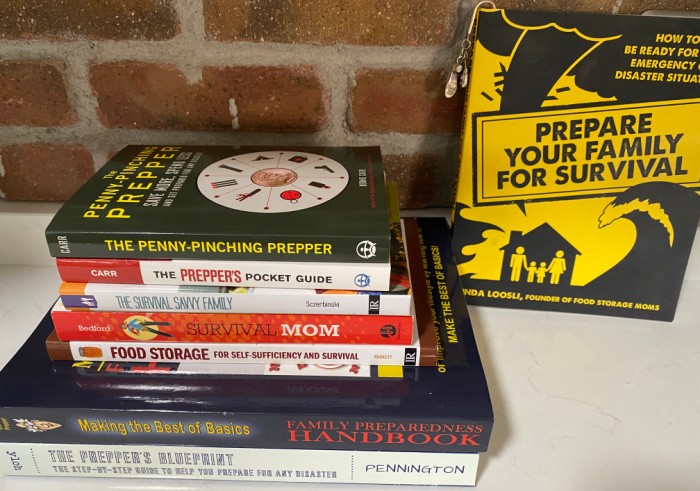

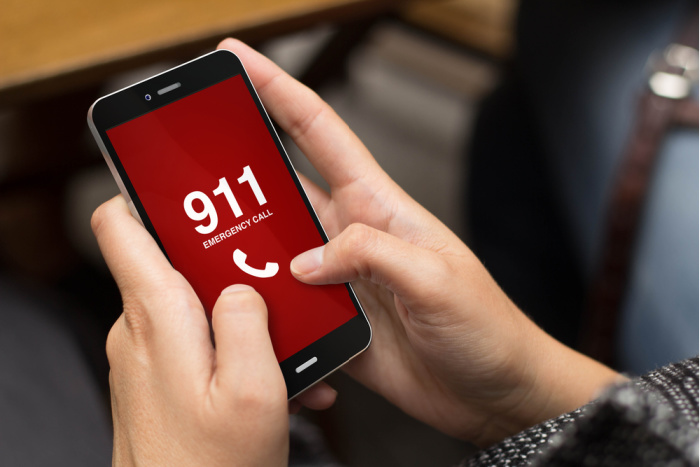

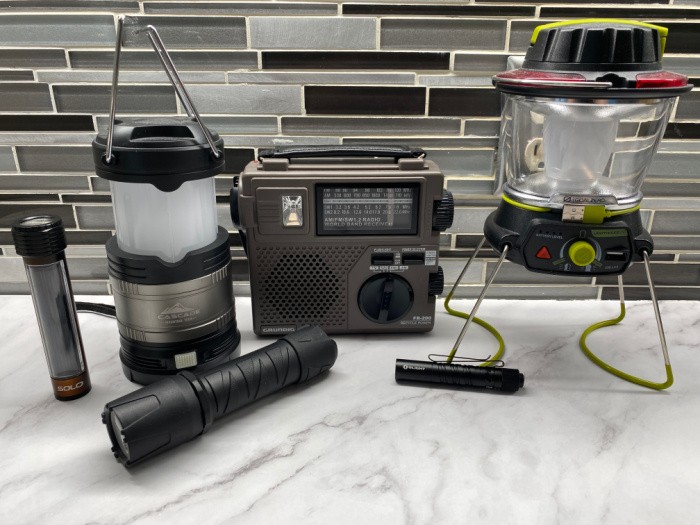














Yeah I go through my vehicle go bag twice a year. Once in the fall and once in spring and about half the time I gotta throw away the batteries in it cause of heat and humidity. I generally just toss them anyway.
Come fall which I’ll probably do next week I replace everything in the head lamps, flashlights, etc cause I’ll start using that bag to hunt with and they get a lot of use. I’ve been going more to rechargeable Olights which has saved me a ton of money though.
The batteries in the storm shelter seem to do ok though.
Hi Matt, oh I love those Olight flashlights!! Great reminder on the headlamps! We have a tough time here with batteries, I’m not sure if it’s the heat. We have the A/C going but I never buy more than I can use in a year. You are so lucky to have that storm shelter, what a blessing. Linda
Linda,
I’ve been using Eneloop rechargeable AAA and AA batteries in my flashlights, TV remotes, etc for twelve years now. Eneloop claims their batteries can be recharged up to 2,100 cycles. They are packaged by Panasonic now (used to be Sanyo). Back when I first bought them Eneloop claimed they could be recharged up to 1,500 times. I have no idea how many times I’ve recharged them over the past twelve years but they are still going strong. The charge doesn’t last as long as when I first got them but I don’t last as long as I did twelve years ago either. In any event they last long enough so I’m not having to change them too often. When they are charged up and in storage they have a very low self discharge rate. I highly recommend them. They have saved me far more than their purchase price. Here are some links to them.
https://www.amazon.com/dp/B00KQ2L9NY/ref=as_sl_pc_tf_til?tag=rdw0a-20&linkCode=w00&linkId=49a5e7eff6aa86217519358145b55118&creativeASIN=B00KQ2L9NY
https://www.amazon.com/dp/B00QVKA0IA/ref=as_sl_pc_tf_til?tag=rdw0a-20&linkCode=w00&linkId=cfcbe53c601bd7d90e5616d59b403e2d&creativeASIN=B00QVKA0IA
There are a variety of rechargers out there and I have several, including this solar battery charger than can also recharge a laptop or phone.
https://www.amazon.com/dp/B006ZSE6TM/ref=as_sl_pc_tf_til?tag=rdw0a-20&linkCode=w00&linkId=fea604aa0f6b65718ee2aac6cda1e867&creativeASIN=B006ZSE6TM
But the main recharger I use is this Ansmann 5207123 Energy16, which can recharge up to 16 batteries at a time, not that I’ve ever had to do that. I’ve had it for twelve years also and it still works beautifully. It plugs in to household current so if your power is out you’d have to use a different recharger like the solar recharger I mentioned earlier.
https://www.amazon.com/dp/B006ZSE6TM/ref=as_sl_pc_tf_til?tag=rdw0a-20&linkCode=w00&linkId=fea604aa0f6b65718ee2aac6cda1e867&creativeASIN=B006ZSE6TM
That Amazon link leads you to the Ansmann site where you’ll have to click around to find it. When I bought mine it was $75.00. Now it looks like it’s gone way up in price. All I can say is it has proven dependable.
I store my batteries at room temperature (74-75 degrees F) in the plastic battery boxes they come to me in, and since I live in the desert the lack of humidity doesn’t bother them.
Hi Ray, oh I love this comment!! Thank you for the links! That will help all of us. I have a few Goal Zero rechargeable batteries, but I want to look at these! I love it! Linda
Ray, not battery related. I just got two of your books today. The Dying Tome: Impact” and “After thenDying Time”. I’ve only read 3 pages of the first one and am hooked! I also have the Bugging In book. Now, if you haven’t already started, you need to start another one. I am a huge reader. I read every day. I especially like the ones on Survival and how and what to do to survive. I tried to contact you at your web site, but couldn’t figure it out.
Sorry for this Linda, I didn’t know how to contact Ray except for here.
Deborah,
Thanks for the kind comments and for buying my books.
Re Contacting me though my website: When you go to my website there is a small red box in the lower lefthand corner. In that box is a link titled contact. I obviously have to make that box bigger. Also, if you sign up for my free monthly newsletter you’ll see each one has my private email address, so readers can contact me directly.
I am more than halfway done with the 3rd book in the Dying Time trilogy, tentatively titled, Freedom Rising. I hope to have it out this year but that will largely depend on the state of my wife’s health.
I have written two terrorist thrillers, actually co-written with Duane Lindsay. The first is titled Tap Doubt and details a plot by terrorists to poison the water supplies of several major American cities–and how a businessman teams up with con artists to stop them.
The second is American Jihad, about how an American Arab who lost his parents in the 011 attacks goes to Iraq to fight terrorists on their home ground and stumbles into some amazing Iraqis and a plot to kill thousands in the US.
Thanks again for contacting me.
Ray, this is amazing, I love hearing about your books. Linda
Hi Deborah, no apologies needed, I call this my forum for all of us to talk to each other. I did not know he wrote all those books. I hope he has an audible. Love this, Linda
Where can I buy your books?
Suzanne, you can get Rays books on Amazon.com Look for Raymond Dean White’s books.
Thanks Deborah, Linda
Hi Suzanne, this is the one I bought, it’s really good. He has several. https://amzn.to/3ufdRX3 Linda
I have two copies. LOL I have one for Prepper Daughter and SIL.
Great book. I’d give it 10 stars if possible?
Hi Deborah, I love it too! Linda
Howdy Folks,
I remember in the 60s, 70s, and 80s the Army, Air Force, and Nation Guard stored their dry-cell batteries in a refrigerator (in supply). I followed this example until a few years ago when I also started to buy the Eneloop rechargeable. I also bought some adapters to use AA in the place of C and it worked out pretty well.
Just my two cents,
CB
Hi Curley Bull, what? I did not know you could use an adaptor to use AA in the place of C!! I remember keeping our batteries in the refrigerator!! Great comment! I need to order some of those Eneloop rechargeable batteries. Great tip! Thank you, Linda
You can buy Enloop batteries at Costco – yea!
Hi Kay, WHAT??? Oh my gosh, I love hearing that! Thank you!! Linda
Hi, Linda. Where did you get your battery storage case in the picture? I saw one like that on QVC channel but it seemed a bit pricey.
We got 2 of those containers and it rally helps to have them organized. We didn’t get them at Amazon, but they are just the same.
Hi Cheryl,
Where did you get the containers, if not at Amazon?
We got them at Hansom Rewards.com They were seen on TV, too.
Something to also consider (for the frugal!) is separate storage for used-but-not-dead batteries. I have a camera that eats AA batteries–but they always seem to have juice enough left to run things like clocks, the indoor/outdoor digital thermometer, my little book-light–so I box those up separately. The rectangular batteries from the smoke alarms can be fitted with a little light clicked onto the top, making a pocket-sized flashlight, which will work for weeks or months after being removed from that smoke alarm.
It’s well worth getting a simple battery tester to check any that you’re not sure about. In fact, I had a friend who worked at the dump for years–when he had a few minutes, he’d pull out his tester and check over the batteries people had discarded. Apparently he hardly ever had to buy batteries–might only use the ones he pulled out for a short time, but still!
I need to get one of those. My son has one and he and his wife love it.
I’m trying to click your highlighted link to the battery holder that you sold but I can’t get it to open. is it possible for you to place that Link down here again for me
Thank you
Sandy
Hi Sandy, is this the one you wanted? https://amzn.to/2XJ72Rg Thank you, Linda
Yes ….thank you very much
Great, thanks again, Linda
We have a wall mounted organizer mounted on the inside door of our linen closet and liked it so much that we bought a second one to mount on the wall of our camper. This is the one we have https://amzn.to/39AUgqL
I like the wall mounted ones because no-one can move it and lose it. I live with 3 people who move things to a “logical place” and then can’t remember where that logical place is. Now we all have one in each of our nightstands and I have a caddy mounted in the main floor linen closet and another one in the food storage area in the basement. These are the boxes I use for flashlights https://amzn.to/3o7xG1o Each of the caddys holds 4 flashlights. I threaten to nag forever if someone takes one out and doesn’t put it back when they are finished with it.
Hi Topaz, I added your wall battery holder to the post. Thank you for sharing. I really like that one. I totally hear you on “logical place”! LOL! No, there is one place that it goes so we can ALL find it. That was the best comment. Thank you! I really like the flashlight holder as well. Love it! Linda
Linda,
My Eneloop batteries I bought 8 or 10 years ago are still going strong, but I only use them inside my house, where temps are in the 70’s. I just keep recharging them, and it doesn’t take but a few hours. Oh, I got some of those adapters to use AA’s in place of C and D cells too. They don’t last as long as regular C or D cells but if you don’t have C’s or D’s they’ll do until you can get some. Also, for those who need 9v batteries an outfit called Tenergy makes good rechargeable ones. And even using rechargables like I do I still pick up packages of regular batteries for use in my vehicle flashlights. The extreme heat here in NW AZ means my Eneloops don’t hold a charge as well as Duracell, Energizer or Ray O Vac’s. Another good thing to have on hand–solar powered flashlights. I have these in my vehicles as well–just sit them in the sun every month or two to keep them charged up.
Re my books: “The Dying Time Freedom Rising” the third book in my Dying Time trilogy will finally be out later this year. It’s at the editors now. What with Jane’s health issues and other life interventions it has taken me 8 years to finish it. So readers might want to re-read the first two in the trilogy (The Dying Time Impact and After the Dying Time) to refresh their memories about the multitude of characters in them before diving into this one.
I’ve started work on another non-fiction book with the working title of “Survival Gardening.” I’m planning on it for release next year.
Linda, sorry for hijacking your post with the above announcement.
Hi Ray, I would give you a SHOUT OUT any day! Congrats, my sweet friend! Great tips on batteries, I have a lot of solar ones as well. Can’t wait to get both books! Linda
Hello everyone! Hopefully I can get Ray’s books from B&N – we don’t use Amazon.
I love the comments on the “logical place”. I’m 5’7″. My Mother was 5′. We came home from shopping to find her putting EVERYTHING in my kitchen “where it belongs so normal people can find things.” Yes, after they went back to Florida I put everything back where abnormal people put things. *sigh*
Hi Cheryl, oh my gosh, I got the giggles over this one. Normal versus abnormal, oh my gosh, I can’t stop laughing. It’s your kitchen, this is the best story ever. I can picture you YOU trying to find YOUR stuff! I’m not sure if he sells on Barnes and Noble. Linda